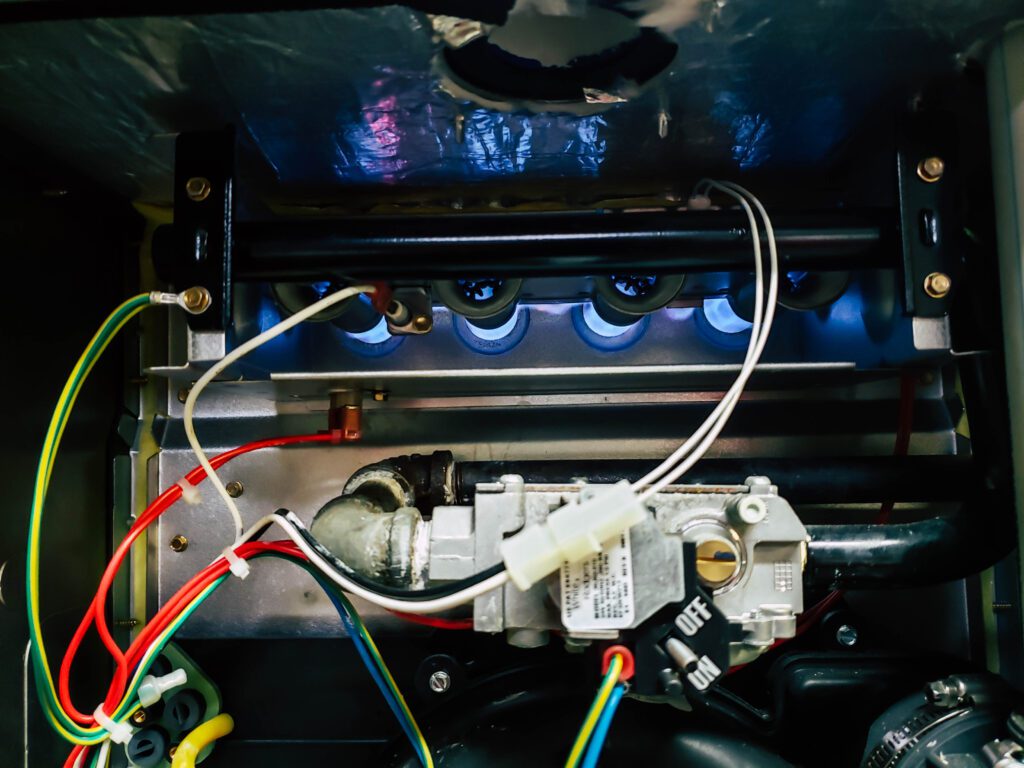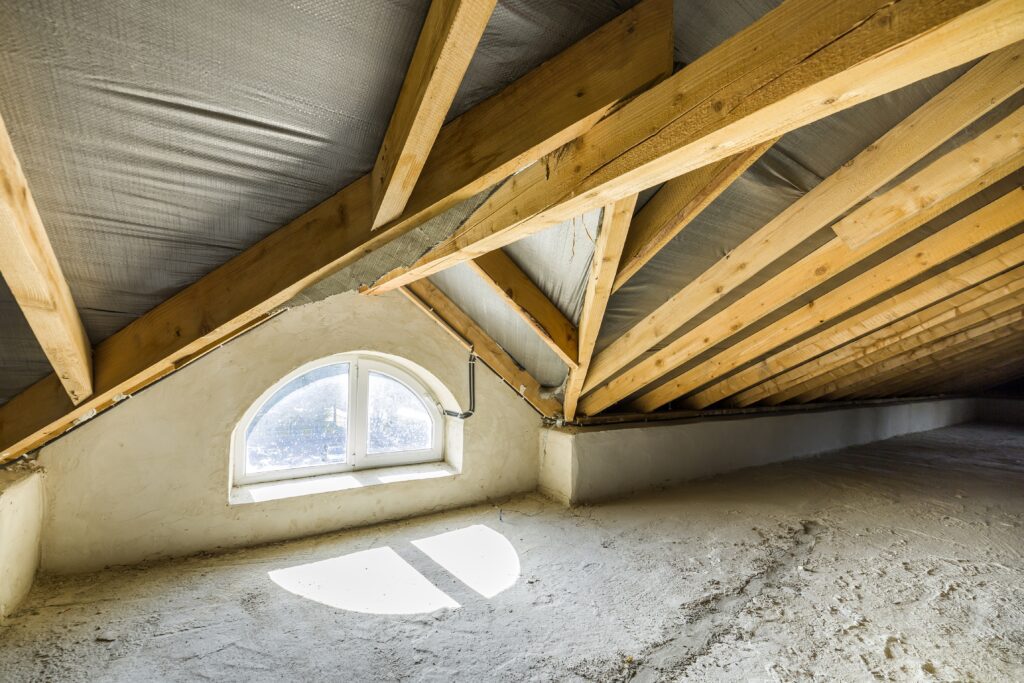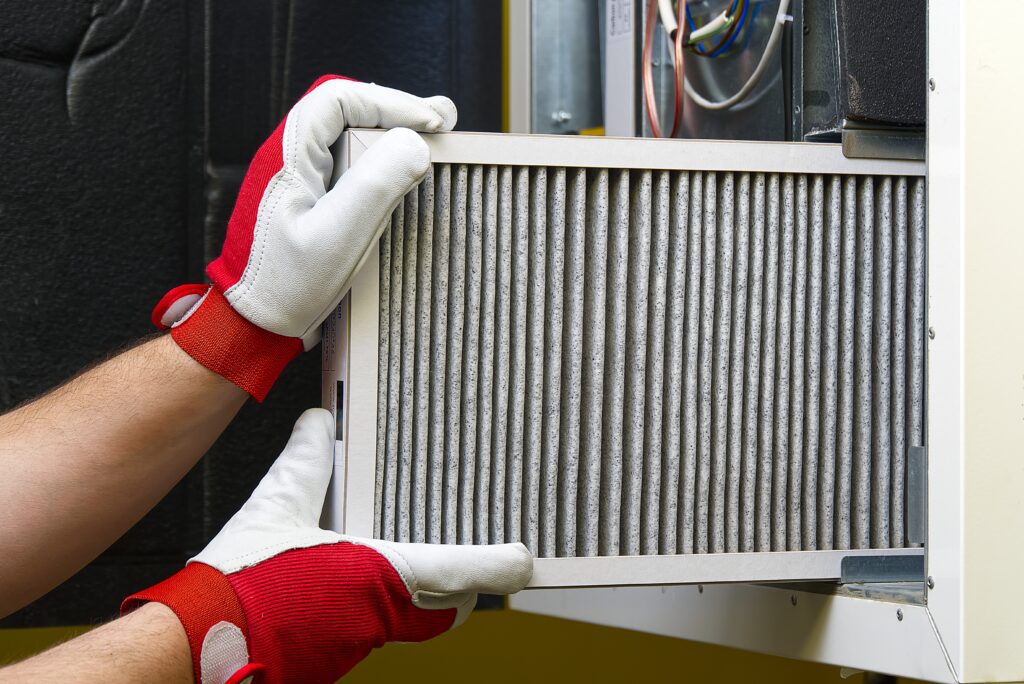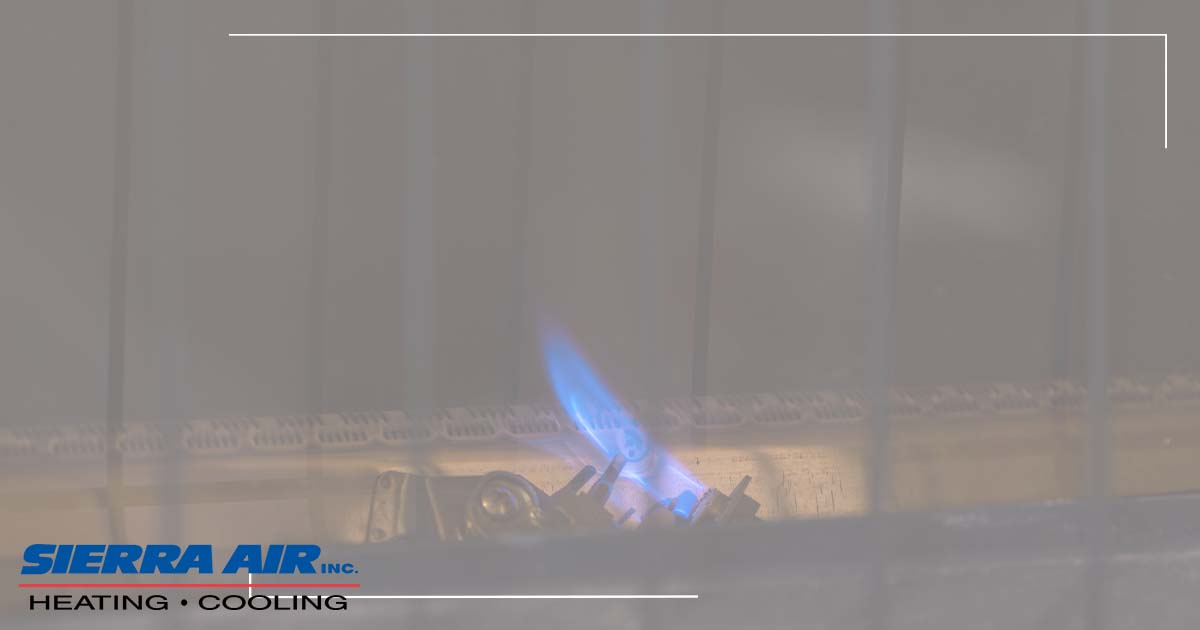A furnace pilot light going out can range from a nuisance to dangerous. We’ll discuss what the pilot light is, common reasons why it keeps going out, and how you can relight it.
What is a Pilot Light
The pilot light is the small flame that, usually, doesn’t go out. It’s found inside the combustion chamber and receives a continual gas supply to keep it burning. The pilot acts as the ignition source for the furnace burners which are responsible for producing your home’s heat.

Reasons Pilot Light Keeps Going Out
Pilot Light is Dirty
The pilot light flame sits in a small opening, also called the pilot orifice. Because the opening is so small, it doesn’t take much dust, dirt, ash, or soot to impede the gas flow and cause the pilot light to go out. If the flame is weak — yellowish or orange instead of blue with a green tint — it likely has a dirty opening.
Thermocouple Fails (broken, dirty, off center)
- Broken or burned out: Since the thermocouple is a piece of metal, it goes through the expansion and contraction cycle many times when it heats and cools. This cycle causes wear and eventual breakdown or failure.
- Dirty: The thermocouple location is perfect for ash, soot, dirt, and other debris to collect on the surface and interfere with its ability to communicate with the gas line.
- Off-center: Sometimes the expansion and contraction can cause the thermocouple to move out of alignment. Without full engulfment from the pilot light flame, the thermocouple thinks there’s an issue and tells the gas to stop flowing, shutting off the flame.
Drafty Basement or Attic
Because the attic or basement often have enough unused space to house the furnace and its necessary ductwork, they’re the chosen installation location. But both rooms are known for drafts and mysterious airflow that can be strong enough to blow out the pilot light. Sporadically check these rooms for drafts and repair the air leak(s) as soon as possible.

How to Re-Light Pilot Light
Although relighting the pilot light for a gas furnace is usually straightforward, if you suspect the issue is something else in the furnace, contact an HVAC technician. It’s better to err on the side of caution when dealing with a gas-fueled appliance.
Check the Manual
Turn off the Gas
Turn off the power supply, usually at the circuit breaker, then turn off the gas. Wait at least five minutes for the remaining gas to dispel before moving to the next steps. Otherwise, any remaining gas could ignite when you relight the pilot light and cause a flash fire and/or injury.
Reset the Gas and Light the Pilot Light
Before turning the gas supply back on, look for a small dial at the bottom of the furnace. This dial should have ‘on’, ‘off,’ and ‘pilot’ options for controlling the gas flow. Turn the gas back on to the unit then turn the dial to pilot — it will allow gas to start flowing to the pilot opening again. Press and release the reset button then use a long lighter to relight the pilot.
Pilot Light Safety and Maintenance Tips
Schedule Routine Tune-Ups and Maintenance
Pilot lights do occasionally go out, but the occasion should be rare. If yours is going out on a regular schedule, it usually means there’s a bigger issue at play within the furnace. Luckily for you, regular furnace maintenance is a great way to avoid these situations. By scheduling routine tune-ups with an HVAC technician, they’ll thoroughly look over the system, including:
- Inspecting the vent system and removing debris
- Examining the heat exchanger.
- Checking the burner and flame sensor
- Testing the furnace’s safety controls
An added bonus of furnace maintenance? It helps your unit work efficiently which saves you money.
Make sure to Change Your Air Filter
The air filter helps keep dust, fur, and hair from flowing into and out of your furnace, improving the indoor air quality of your home. It also keeps the furnace operating by stopping these particulates from coating internal components. But when the filter clogs, you may notice more junk in the air and less warm air coming from the furnace. It’s recommended to change the air filter every two to three months to avoid any hiccups.

Place Carbon Monoxide Detectors in Bedrooms
Carbon monoxide (CO) is a byproduct of combustion in any gas-fueled appliance, including furnaces. This odorless and tasteless gas is dangerous to humans and animals, and can leak from a furnace at any time. This is why it’s extremely important to keep CO detectors in every room, especially bedrooms, so you and loved ones can be alerted at any time of day.
Regular maintenance and professional repairs are the best way to keep your furnace pilot light burning at all times.


